Do you have a project that is spiralling out of control? Agile teams struggling to stay agile? Then read on for detailed advice on such struggles, and turn your chaos into clarity.
Challenge 1: Bringing order to a huge project

When teams lose track of their work, you need a clear system to prioritise tasks and assign them to the overall project. After all, it's often impossible to understand how extensive the problems are or where they belong in individual teams, organizations or even individual developers. Using Jira in combination with Structure for Jira solves these challenges. In particular, you have the ability to easily group and visualize multiple Epics and their child stories so that multiple Epics are displayed at the same time, even if they are spread across many Jira projects. An optimal way to see the full scope of the project!
How should you proceed?
Set yourself 5 milestones to create a lasting process.
-
Find all your problems
-
Sort them into categories
-
Find out how issues are connected to each other
-
Create a standardized way to involve teams working outside of Jira
-
Make full use of communication tools.
Challenge 2: Create project predictability without overloading your agile teams.
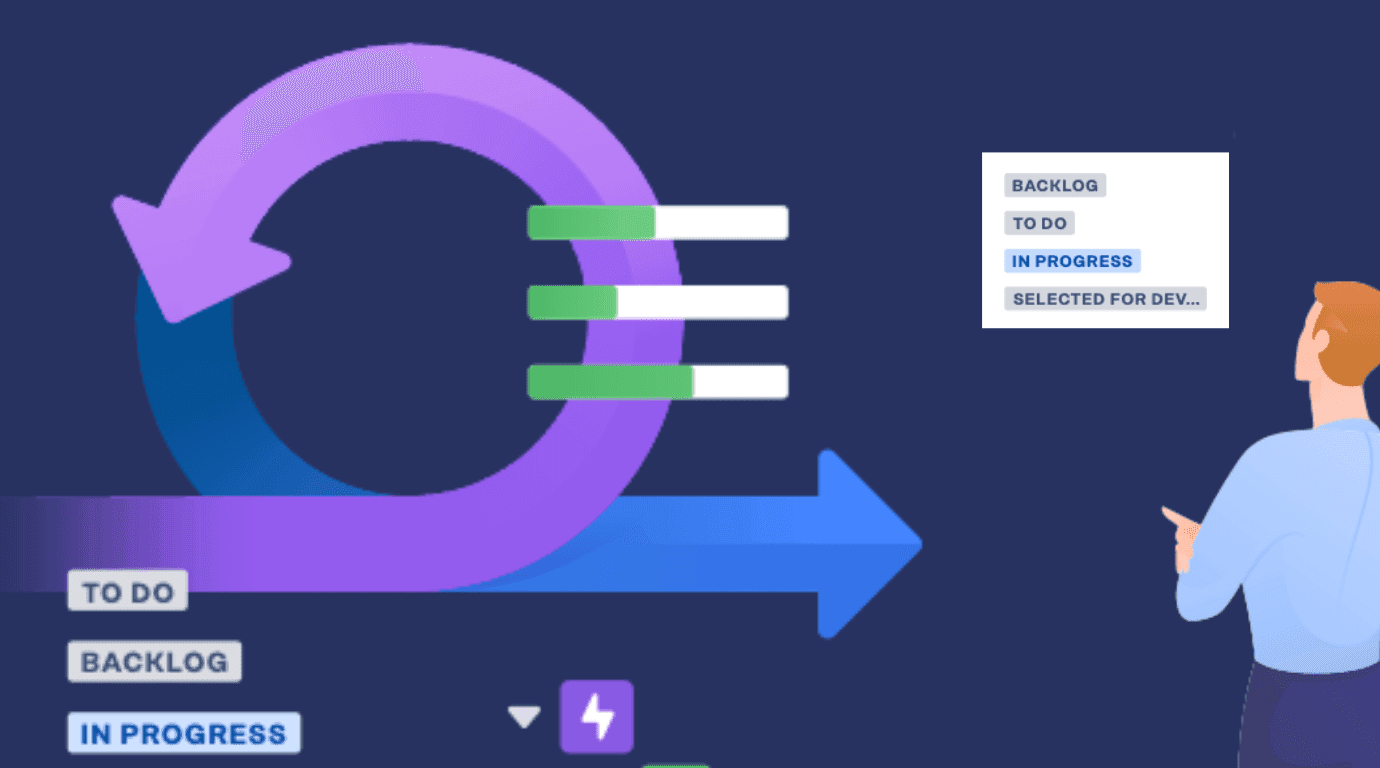
Developers, quality engineers and other contributors should not have to spend a lot of time in update meetings or communicating their requirements to each other. They should be able to use agile methods at the team level, but also report easily to the larger group so that users across the organisation can see the overall progress without having to gather status updates from individual projects. The key to all of this: No matter what we do, we really need to have a holistic picture of the work we are doing. When you implement the cloud version of Structure, you provide everyone involved with a useful visualisation of the work. For example, you can use elements of the Scaled Agile Framework (SAFe®). This ensures that all teams can see where the company stands with its releases, goals and story points. You can even use Structure to manage your own work log. It summarises all the user stories and tasks assigned to it, from project management tasks to reports for KPIs to the weekly readouts one needs to do.
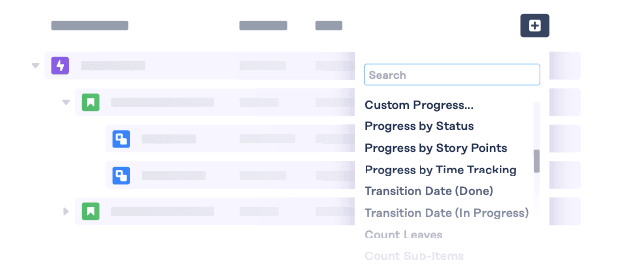
Apply Atlassian's Jira Query Language (JQL) within Structure to create customised release management structures where all Epics are divided into Features, User Stories and Bugs. Thanks to JQL and the Structure Automation Generators, these structures always reflect the current state of all relevant Jira issues. Using structures for everyone's tasks can help everyone understand each other's workloads and priorities, and improve coordination across the organisation. Jira and Structure for Jira give project managers an overview of their projects and improve their ability to predict how things will develop and adjust accordingly. The result: improved release management with a complete hierarchical overview of projects.
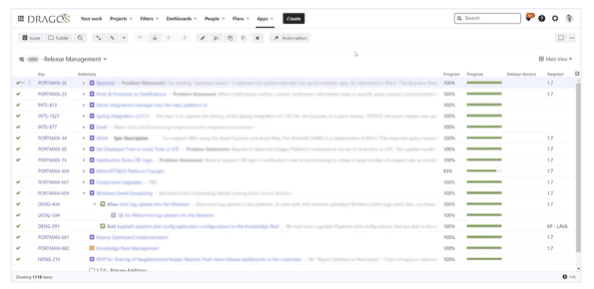
Challenge 3: Less headaches with traceability of requirements.
Large projects often come with overwhelming, complicated testing requirements. All of this is very difficult to keep track of and manage without spending hours on the details. What is the status of each component? Has it passed all the tests assigned to it? How has it performed against the required specifications? Are these requirements linked to the individual components? If teams cannot easily see the links between requirements and tests, there is a chance that new versions will slip through without being fully tested, you only notice this when customers complain. The goal to prevent this scenario: A combination of Atlassian ecosystem solutions for a unified requirements traceability platform. Structure provides the foundation for easy visualisation. While Jira's hierarchy ends at Epics, Structure lets you build as many levels as you want. The XRay app adds test management capabilities to Jira. Using tests and test executions linked to requirements, and Epics or User Stories that can be displayed in structures, the overall data flow allows users to maintain traceability and have a better understanding of the exact progress of each item.
The hierarchy could look like this:
- Initiative
- Project
- Feature
- Epic
- Story
- Source Code
- Build Number
- Test Management
- Defects Management
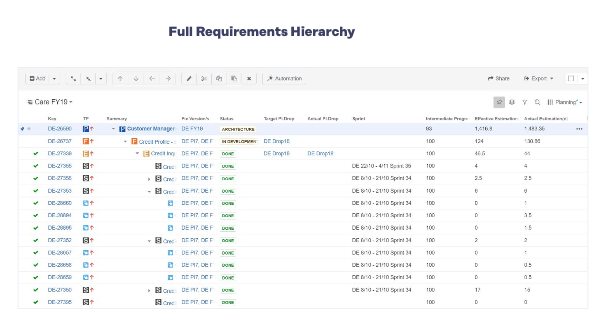
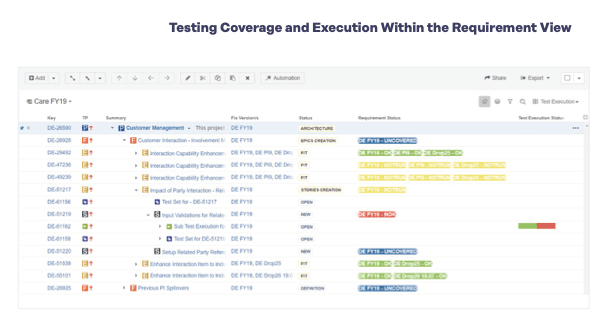
Challenge 4: Create a single source of truth by bringing teams and processes together in Jira.

Who doesn't like them, the orderly project processes. But often the planning of important initiatives takes place in other tools, but the actual execution is moved to Jira. When plans change, someone has to update first in the planning tool and then the work in Jira, which of course means that you can't be sure that everything is at the same level. If you use Structure you can do it without this procedure. Simply make a change to how you planned within Jira and Structure, remove or add any story points, and watch the entire project hierarchy update automatically. Everyone from the Vice President looking at an overall view to the Developer working on a Jira issue can find the information relevant to them. For example, they can see what tasks have been assigned to a team or person this quarter, or get the status of dependent tasks and predecessor tasks.
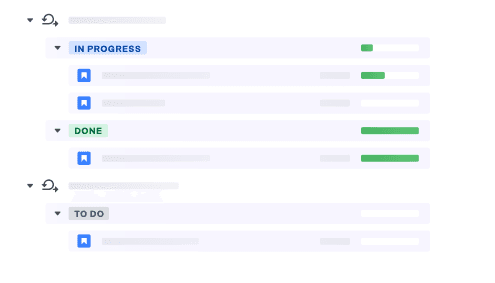
Challenge 5: Managing fast-growing teams as your business expands.

The simplest rule for your business: Always look for project management tools that are flexible enough to adapt to the way you work. Create one system that keeps everyone on the same page and makes the work easier to analyse. Also, don't just look for a great application, look for one that fits your existing workflows and culture. Use Structure for Jira as the primary method for efficient tracking and clear understanding as you scale the business. As an example, Structure allows a 130-person development team to organize its work in Jira. It gives you the ability to create hierarchies of issues called "structures" and populates them using the app's automation feature. With this function, users can define special rules, called generators, that form the basis for these hierarchies.
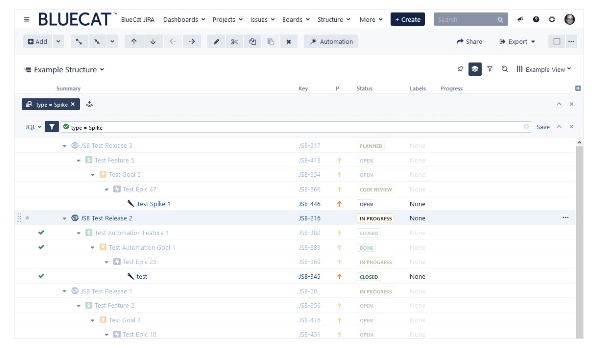
Structure for Jira creates the views you want, automates actions to track tasks, and creates space to change the process as needed.
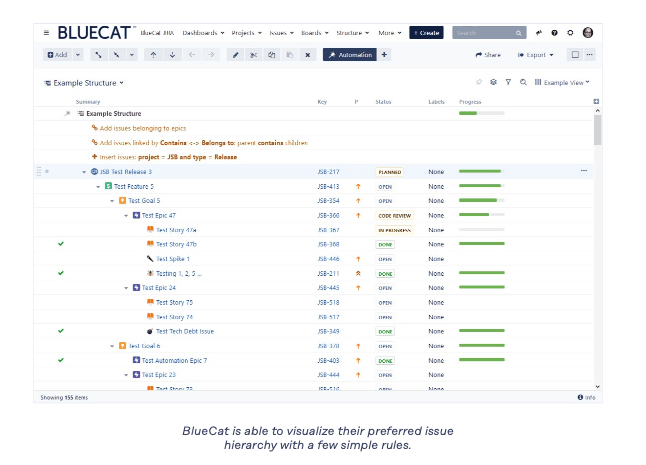
Do you have questions? At ByteSource, we can help you transform your enterprise's processes by creating a clear, scalable, and automated workspace for you. Customized to your needs. Bring structure to chaos and contact us today to increase the efficiency of your work processes.

Source: ALM Works,Structure Jira Wins E- Book
